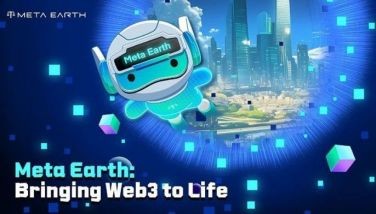Chemical hopes
Back in 2012, anthropologist Anita Hardon of the University of Amsterdam invited me to bring the Philippines into an international anthropological research project on “chemical youth,” looking into what young people were using – externally and internally – on their bodies.
A preliminary phase of the project, asking people to just list what they were using “from head to toe,” produced mind-boggling lists, convincing our team we needed to look not just at the chemicals but, more importantly, the reasons for the growing “chemicalization” of young people’s lives.
The project took off with funding from the European Research Council, covering the Netherlands, France, Indonesia and the Philippines and extended from 2013 to 2018, which then spinned off new, including ongoing, research around important issues, such as the marketing of these products.
I want to share just one aspect of our research – let’s call it “chemical hopes” – to show how the social sciences interface with the natural and medical sciences to better understand the impact of social changes on people’s lives.
In the Philippines, we interviewed more than 400 young people, mostly between the ages of 18 and 25. Besides the interviews, we went around retail outlets to look at the products young people were naming. Being the oldest researcher in the team, I could share my memories of how “personal products” have been taking up more and more shelves in drugstores, groceries and other retail outlets, including sari-sari stores that sell these products in sachets.
Our homes have changed too, toilets filled with all kinds of products, each member of the family having his or her own brand of shampoo and conditioner, soaps and washes for the face, for the body and for the “intimate” parts (male and female versions). Spilling into the bedrooms are even more lotions and creams and “beauty products.”
Chemicals are to be found on our dining tables and I don’t mean the food seasonings but the vitamins and supplements promising good health, cures, virility and eternal youth.
Our young informants had many stories behind each of the chemicals used and we realized that more than physical transformations, they were using chemicals to meet social expectations.
Today’s world puts so much pressure on young people to find and shape their identities, and to get ahead in life. Their bodies have become capital to meet those aspirations and companies have recognized the potential profits from creating products for every part of the body, with advertisements telling people how those parts should look, smell, feel. The promotions are pervasive, using celebrities, social media influencers and very aggressive multi-level marketing firms.
The bombardment of messages starts early in life, an example being the way even pre-teen boys and girls dye their hair to look like their classmates and K-pop stars, despite medical opinion that the dyes might be damaging to fragile young hair, besides exposing the users to chemicals like ammonia, which are irritating to the respiratory tract and mucous membranes (e.g. the eyes).
We found low-income youth wanting to emulate young people from the upper classes. Skin whiteners were not a matter of wanting to be “white” like Caucasians, but to have that “kutis mayaman” (complexion of the rich), smooth and fair. Few of our young informants were aware of the dangers of some of the skin whiteners, for example possible mercury content in contraband products from abroad or, even in government-approved products, chemicals that need to be used with caution, for example tretinoin, whose side effect of skin reddening is misinterpreted as a desired “glow” for the complexion.
Add on the social pressures, which make consumer informed choice an illusion. Working-class females, for example, will spend part of their meager wages or allowances to use cosmetics and skin whiteners because their employees require them to be “presentable” to customers.
We looked too at what people were taking into their bodies and the findings gave us new perspectives on the psychoactive drugs. Young people take various stimulants – from high-caffeine tonic drinks to shabu – to stay awake for work or for school or, for security guards for example, as a way to stave off hunger during long hours of work.
Chemical products offer promises of modern technology and promises of quick fixes. Young men buy products that they think are building up their bodies when the products are actually steroids, which cause edema or water retention, giving the illusion of “bulking” the body.
Perhaps the most dramatic chemical transformations are those of transgenders, who use their networks to exchange information on the use of hormones to transition, from male to female and female to male, but with no medical guidance.
Chemical categories blur in their usage, people unaware that Food and Drug Administration approval criteria are different for medicines, supplements and food. Vitamins straddle these categories and have the most misinformation circulating, such as claims that they give energy and stamina, or that they add inches to height. Vitamins become panaceas or cure-alls, sometimes cruelly deceptive as in claims that they counteract the effects of pollution.
What we see today is so similar to alchemy, which flourished in the Middle Ages in Europe as a futile search for ways to transform base metals into gold or silver and to develop an elixir for immortality.
Today’s alchemists do not promise gold but they peddle elixirs and false hopes. People – young and old – sorely need to hear more from scientists, health professionals and governments to counter the misinformation and disinformation.
Our research findings underscore an urgent need to address young peoples’ aspirations in life, and help them to realize that the desired transformations in our bodies are not to be achieved through vitamins, supplements and cosmetics but through the simple chemical miracles that come about from eating right, sleeping right, getting enough exercise and stress-busting mindfulness programs.
* * *
Michael L. Tan is a medical anthropologist. He is Professor Emeritus at the University of the Philippines. A website, chemicalyouth.org, features the many products from his research, including a film on multi-level marketing of supplements.
- Latest
- Trending
























